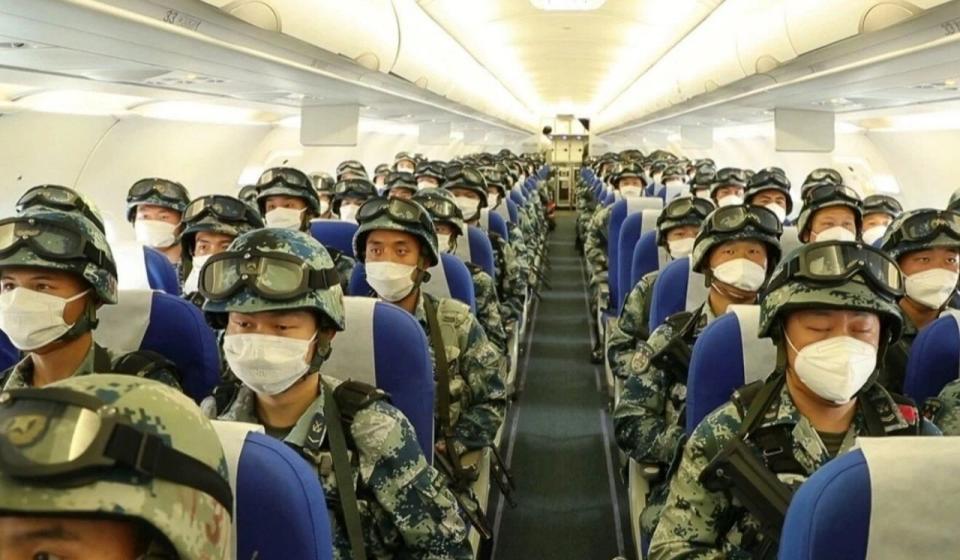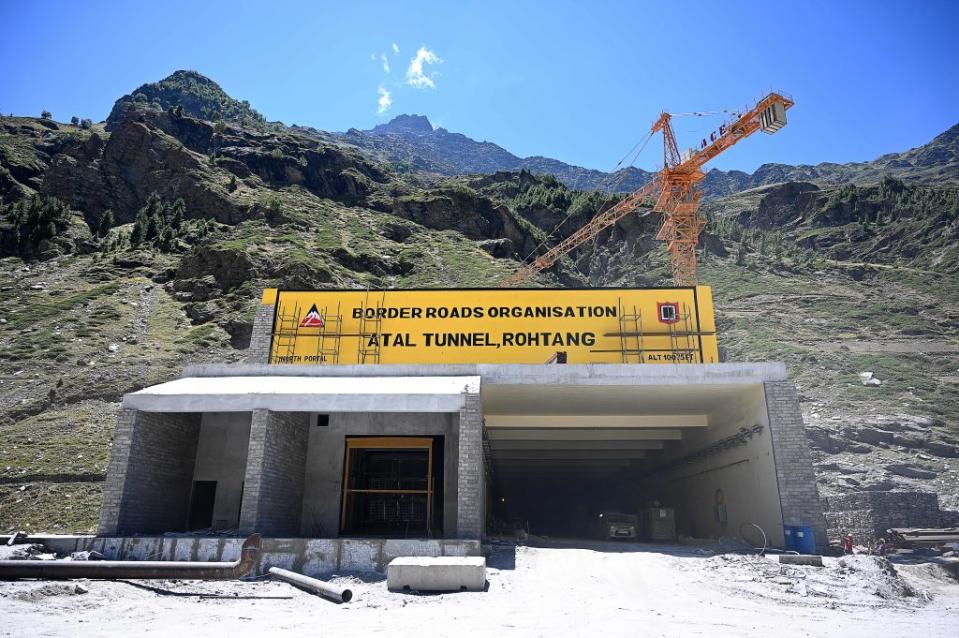‘Grave human tragedy’: Chilling warning as countries edge closer to war
There are serious concerns that mounting tensions between India and China are edging them closer to war.
The two countries have been involved in a long-running feud over its border in the western Himalayas, but the clash in the Ladakh region became deadly in June with 20 Indian soldiers killed in the Galwan Valley while China suffered an unspecified number of casualties.
About 10 days after the attack, a “worrying” satellite image showing new Chinese structures near the border heightened concerns about further flare-ups between the nuclear-armed neighbours. Further images showed accelerated construction of Chinese runways and buildings at nearby Hotan.
Tensions have continued to rise in the months that have followed, with a Chinese soldier detained this month after straying into Indian territory.

According to China’s official military newspaper PLA Daily, the corporal was handed back by the Indian side early on Wednesday morning after India announced on Monday the soldier had been “apprehended”.
India and China have poured tens of thousands of troops into the region since the June battle despite several rounds of talks.
Tensions have also spilled into civilian life, with some Indian nationalists demanding a boycott of Chinese goods, and the government banning a slew of social media apps from its major rival.
India is also seeking closer security ties with other countries wary of China's growing military power.
Australia announced on Tuesday that it would for the first time take part in naval exercises with India, Japan and the United States in the Indian Ocean.
Chilling warning of ‘grave human tragedy’
A former commander in India’s Army, Lieutenant General PJS Pannu, told The Independent both sides would continue to prepare to fight until the dispute over who can build infrastructure along the 3,500km border, known as the Line of Actual Control, is solved.
He noted if the border tensions mounted into a war, a third of humanity would be involved in the conflict while everybody else would be in some way impacted.

“The onus lies on the political and diplomatic community to find solutions to avoid grave human tragedy,” he told The Independent.
“Not only in Asia but also for a larger part of the word. If this kind of irrationality persists, people will lose their jobs, health and lives. Economies are already shrinking.
“China is inviting anger of the whole world ... A war would mean the world attacking China from all directions.”
Last month China and India agreed they would stop sending more troops to the contested border. A joint press release issued by the Indian government said both the Asia powerhouses agreed to “avoid misunderstandings and misjudgements” and “refrain from unilaterally changing the situation on the ground”.
India opens underground tunnel route
However, earlier this month India’s Prime Minister Narenda Modi opened a Himalayan tunnel that would drastically reduce the time needed to rush troops to the country’s remote Chinese border.
The tunnel traverses India's northern Himachal Pradesh state and lies on one of two main routes for troops headed to border areas in Ladakh.
The $560 million, 9km tunnel will cut the journey by about 50km and four hours, enabling travellers to bypass a tricky route across a landslide-prone Himalayan pass.

A decade in the making, freezing temperatures and the challenging terrain meant construction work could only be carried out for about six months each year.
The project is part of New Delhi's push to catch up with Chinese infrastructure development on the other side of the border.
with Reuters and AFP
Do you have a story tip? Email: newsroomau@yahoonews.com.
You can also follow us on Facebook, Instagram and Twitter and download the Yahoo News app from the App Store or Google Play.




